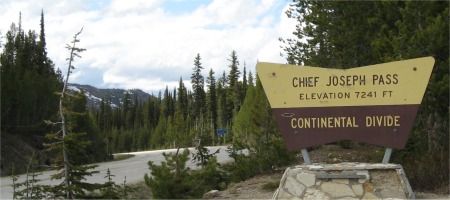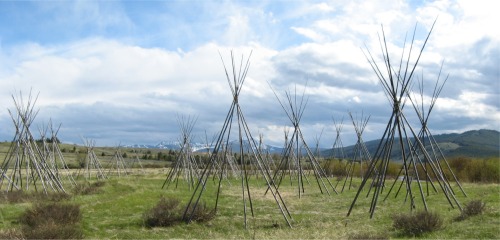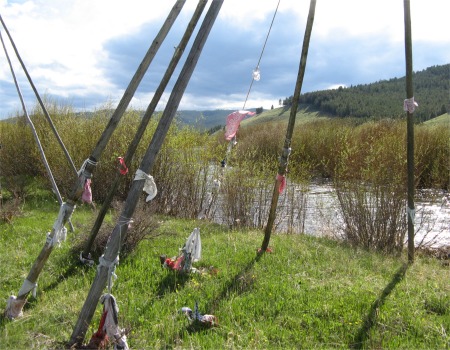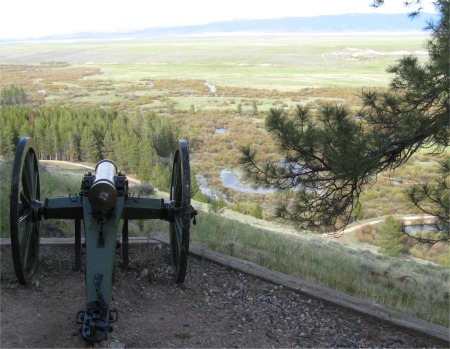After the shock treatment of sleeping in a bed for the night, I made my way around to the dealer's where I had dumped the van the night before. They had read my note and already had the van in their workshop. They had already priced up the job: a new alternator, a new battery (I had crucified the last one by running it totally flat) plus labour. "$443 sir". I discussed the control connections to the alternator just to get clear in my head how the system worked. They could complete the job by noon, so I asked them to give me a call when the job was completed and left them to it. They called me at 11am to say they had finished and would I care to collect the vehicle. The bill came to $183, less than half the original quote, so I examined the detail. There was no alternator charge. I didn't want to fiddle the company so I queried it. That was correct, they hadn't installed a new alternator. I asked the technical man for an explanation. They had installed a new alternator, and found that even it wasn't charging the new battery. Subsequent investigations revealed that a sensor fuse had been inserted incorrectly, and was only making intermittent contact. They installed the fuse correctly, put the old alternator back, and Bob's your uncle. I was overwhelmed with the unscrupulous honesty of the company and couldn't thank them enough. I thought back to when I first checked the van out in Seattle. I had found a few problems, and the mechanic there started fiddling with fuses and I reckon that's where this all stemmed from. B....y amateur. Perhaps when the van suffered an alternator problem the first time in Seattle, it was really the fuse issue again, and the Auto clinic thought they had solved the problem by installing a new alternator. I'd never know and I was past caring.

Continental Divide on Chief Joseph Pass
|
I was on my travels again heading down the Bitterroot Valley. This was a wide valley at its northern end, but the further south I got the narrower it became. After 80 miles or so it became a canyon and started to climb. It was up this canyon where the Lewis and Clark Expedition entered the Bitterroot Valley in 1805, near what is now called Lost Trail Pass. The name Lost Trail reflects the experience of the expedition as they traveled across the steep slopes in the snow and sleet. The exact route is still a mystery. In the Sula Basin, they came upon a Salish Indian camp. The Salish were aware of their approach. Since the explorers had no blankets, the tribe thought they might be a group of travelers who had been robbed or possibly lost their blankets in battle. The Salish were short of food, but shared what they had and treated their guests with hospitality. They traded fresh horses with the explorers, who needed them to continue over the Bitterroot Mountains. The horse trading went through a communications chain of English, French, Hidatsa, Shoshoni, and Salish. The explorers were interested in the Salish language since it sounded different to other Indian languages. There was speculation the tribe could be Welsh descendents of historical legend. The travelers reached their goal, the Pacific Ocean. On their return to the Bitterroot Valley, they separated. Lewis and a small group went north to explore a shorter route their guide had pointed out. Clark and a bigger group headed south, eventually crossing Gibbons Pass to the Big Hole.
It was a very long climb up the canyon to Chief Joseph Pass. The junction where the pass started was right on the border with Idaho, so I drove a few hundred metres into Idaho and back just for the hell of it. Once on the pass I stopped after a quarter of a mile just to stand on the Continental Divide. This pass provided the connection between the Bitterroot Valley and Idaho with the Big Hole. It was named after Chief Joseph, leader of a band of the Wallowa Nez Perce (pierced nose). He was a peaceful, principled man. An eloquent speaker, he talked passionately about his people's unjust treatment by the US government, before, during and after the Nez Perce War of 1877. Exiled to the Colville Indian Reservation in Washington state after the war, Joseph continued to speak publicly of his wish for the return of Nez Perce homelands.

Site of the 1877 Campground - Silent Tipis on Sacred Ground
|
I dropped down from the Continental Divide into the Big Hole, which is a fairly expansive flat plain of grass and scrubland completely surrounded by mountains. A geological fault had dropped this vast area, and at the boundaries where deep fissures extend low into the earths crust, water percolated down and rose up again as hot springs. About 10 miles down where the ground leveled out, there lay an area of land which was slightly depressed compared to the rest. This was where the Big Hole National Battlefield was situated.
The Big Hole National Battlefield is a memorial to the people who fought and died here on August 9/10 in 1877; combatants in a five month conflict that came to be called the Nez Perce War of 1877. In 1992, legislation incorporated Big Hole National Battlefield with Nez Perce National Historical Park, making it part of a unique park consisting of 38 different sites located in five states; Oregon, Washington, Idaho, Montana, and Wyoming.

Next to the Willows and River where the Women and Children Hid
|
The history of the war is as follows. In 1877, about 750 non-treaty Nez Perce fled Idaho in the face of demands from the US Army that all Nez Perce move onto a reservation a fraction from the size of their traditional homeland. The Army was enforcing a national policy of placing all American Indians on reservations to make way for the westward expansion of the young United States.
In early August, the non-treaty Nez Perce camped for several days along the North Fork of the Big Hole River. They knew they had crossed into Montana Territory, and believed they were safe from further pursuit. Just before daybreak on August 9, 1877, military forces attacked them as they rested after six weeks of conflict and flight.
Although the soldiers and civilian volunteers attacked the village while most of the Nez Perce slept, the warriors quickly mounted a resistance and drove the military men to retreat to a wooded hill nearby. The soldiers dug trenches for protection, but the Nez Perce warriors surrounded the fortified hill and held the soldiers there. Meanwhile, the older men, women and children in the camp buried the dead and fled again.
The Battle of the Big Hole was the largest of the skirmishes with the soldiers, and lasted less than 36 hours, yet casualties were dreadfully high. Between 60 and 90 Nez Perce men, women, and children were killed, most in the initial attack on the sleeping camp. How many Nez Perce were wounded in the battle is impossible to say, but the number is doubtlessly high. Twenty-two soldiers, a civilian guide, and five civilian volunteers were killed, and 39 more were severely wounded.
From the Big Hole, the Nez Perce continued to flee from the military, traveling east through Yellowstone National Park, then turning northward and moving toward the Canadian border. There were several skirmishes and encounters with federal troops in the weeks that followed the Battle of the Big Hole, but it wasn't until early October that the US Army finally succeeded in forcing most of the non-treaty Nez Perce to surrender. The Nez Perce had fled 1,720 miles, and were 40 miles short of the Canadian Border. About 150 escaped into Canada.

Howitzer Overlooking the Battlefield and the Big Hole Plain
|
Trails allowed me to walk to where the Indian tipis were erected and where the initial slaughter took place, to the siege area where the soldiers dug in for a counter-attack, and to where a howitzer was mounted, too late in the day to be effective, and was rapidly over run by Indians. I found this all very moving, in particular walking around the tipi village area (it was well documented at the time). I thought back to when my son and I walked through the First World War battlefields near Ypres, and the emotions evoked by all those needless horrific deaths, many tens of thousands each day. But here was a different tragedy; the numbers were miniscule in comparison, but it was the shooting of women with babes in their arms, and the bludgeoning of the children to death that I found so difficult to comprehend. My mind was unconsciously switching off. It was literally beyond comprehension.
Like other Indian Wars in the late 1800's, the Nez Perce War involved two very different groups with very different outlooks on land rights, civilian authority, government powers, social organization, and the responsibilities of the individuals to society. Some would believe that the benefit of subduing or assimilating American Indian tribes was of primary importance to the expanding United States. As I thought about what mankind has learned from history, there were similar philosophical differences and consequences being played out in national and international events today.
Here is a Nez Perce viewpoint from the aftermath of the 1877 war:
"With women's hearts breaking, children weeping and men silent, we moved over the divide and closed our eyes upon our once happy homes. We were wanderers on the prairie. For what? For white man's greed. The white man wanted the wealth our people possessed; he got it by the destruction of our people. We who yesterday were rich are beggars today, made so by the order of a Christian white chief. We have no country, no people, no home. We do not desire longer life, and we pray day and night that the Great Spirit will remove us"
Chief White Bird
October 22nd, 1877
I left the area with sadness and drove across the Big Hole plain and skirted the mountains until I found a campsite by the Big Hole River. There I remained lost in my thoughts till sleep came.




